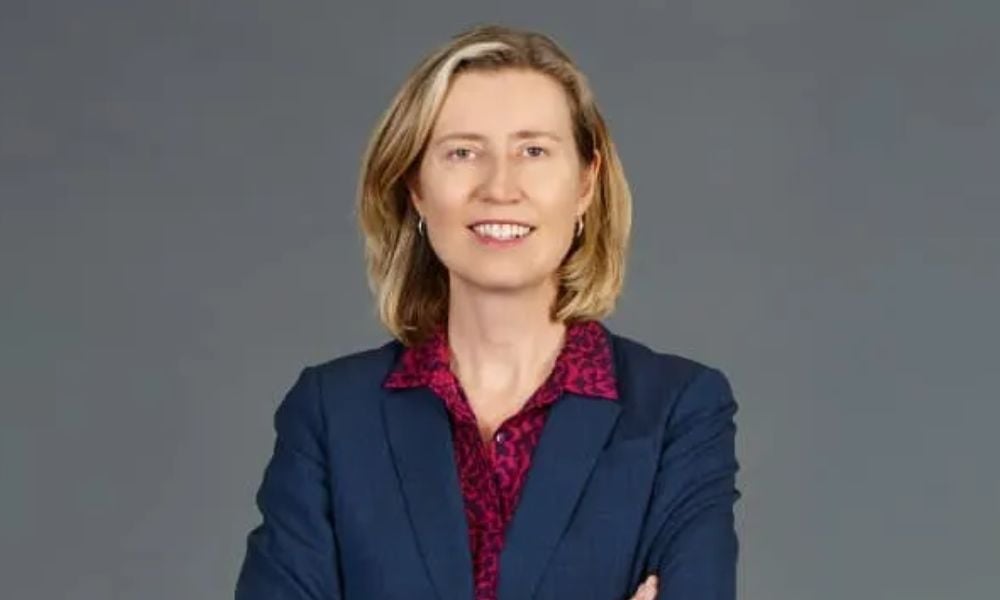
The bottom fell out financially as Pearson went from 50 million to 13 million passengers

It’s unlikely that COVID proved more of a maelstrom for a legal department leader than it did for Kath Hammond, Vice-President and General Counsel, Corporate Safety and Security at the Greater Toronto Airports Authority, which operates Pearson International Airport.
“Our airport went from some 50 million passengers to 13 million in 2020,” says Hammond, who’s been in her role since 2018. “Because passenger fees, landing fees, rental income and money spent in the airport are our only sources of revenue, the bottom fell out financially.”
Still, cargo shipments and travel continued as an essential for some, so Pearson remained operational. As Canadian airports are independent of government and self-finance operating revenues - to the tune of a $6 billion debt load for GTAA - changing and adapting became the order of the day.
“We had to redraw our business plan entirely, drop capital projects, and very reluctantly reduce our workforce by about one-third,” Hammond says.
Health and safety, of course, also took on new meaning, with special implications for Hammond, whose responsibilities included overseeing corporate safety and security and an attendant staff of about ninety. Regular changes in travel restrictions; mandatory COVID testing for arrivals; setting up facilities for departure testing, including an onsite lab and later, an offsite lab in conjunction with a health care services provider; and switching to remote work wherever possible all culminated in what can only be described as a perfect storm.
Then, as quickly as it had come, it went.
“In the first half of 2022, we went from one of the most shut down to one of the most wide-open countries in the world, with a huge impact on our airports as an enormous volume of pent-up travel demand emerged, especially when the summer came around,” Hammond says. “At the same time, the many laid-off staff across the entire ecosystem couldn’t be replaced overnight, which meant we couldn’t keep up with demand – and we weren’t alone, that was a global phenomenon.”
Even when new staff were recruited, the vagaries associated with airport safety and security, including the need to vet new recruits, proved daunting.
“I’ve never seen volume like that before in terms of the people who needed passes,” Hammond says.
Fortunately, by the time the summer high season rolled around this year, things had improved greatly.
“We did all we could to add people back, which has made for a much better passenger experience in 2023,” Hammond says.
Through it all, the core legal team, tightly knit and seasoned (one lawyer just celebrated 25 years’ service, with another coming up on two decades) and now made up of seven lawyers, soldiered on.
“We worked from home, but at the beginning had daily touchpoint calls to keep people feeling connected and maintain issue awareness,” Hammond says.
Among the challenges facing the team was the need to become experts in health and safety law virtually overnight, dealing with the overlap between federal and provincial jurisdiction that COVID heightened, negotiating with tenants who were suffering financially, and finding a middle ground that treated the airlines fairly while protecting GTAA’s interests.
“There was also an uptick on the governance side, as our board met much more frequently,” Hammond says.
As it turns out, the legal team’s structure lent itself to the challenges.
“It’s a fascinating place to work because we’re always running into unique legal issues that force us to analogize to other areas of the law,” Hammond says. “Everyone is a generalist to some degree, partly because we all need to be alive to the important issues, and the hierarchy is totally flat with all lawyers having direct client accountability.”
There are, however, what Hammond calls “spikes of expertise based on history and experience.” One lawyer, for example, focuses on capital programs, another on regulation, and others on environmental issues, securities law, and commercial leasing.
“Our goal is to add another layer of clerks and highly skilled administrators as well as students,” Hammond says.
Meanwhile, Hammond’s background – one that mirrors the evolution of GCs from legal advisers to business strategists – has served her well.
Called in 1995, Hammond spent five years in Torys LLP’s corporate department in a transactional practice. She and her husband then took a year off to volunteer with Habitat for Humanity in Ecuador.
“The experience shifted my interests to pursuing work in which I had more stake in the outcome and more influence at an earlier stage,” she says. “I was also hoping for more work-life balance which, however, continues to elude me.”
In 1999, Hammond joined Ontario Power Generation in the midst of the organization’s succession to Ontario Hydro. Eventually promoted to associate GC, Hammond found that she enjoyed a management role.
Still thirsty for business experience, however, Hammond transitioned to the business side, focusing on hydroelectric development.
“I became a project manager developing and redeveloping hydro stations, where I worked in various partnerships and led teams composed of lawyers, finance specialists and engineers,” she says. “Then I volunteered to become involved on the nuclear side, where I headed the team that negotiated centrepiece refurbishment contracts, which involved a huge learning curve.”
In 2012, Hammond moved over to pension fund OMERS’ infrastructure team, which took her back to the M&A work that had characterized her private law career.
“But a pension fund is, quite properly, focused on returns, and I missed the direct involvement with assets and operations, which is what motivates me to be fully invested,” Hammond says. “So, when the GTAA opportunity came up, I jumped at it.”
That, as luck and hard work would have it, turned out be a very good thing for both the GTAA and the travelling public.